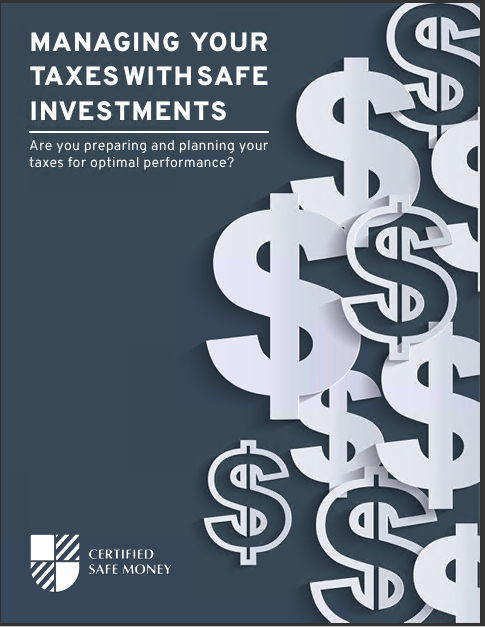Tax Advantages of MYGAs: How to Optimize Your Retirement Income
Multi-Year Guaranteed Annuities (MYGAs) have become increasingly popular among retirees looking for stable, predictable returns on their investments. One of the key benefits of MYGAs is their tax advantages, which can help optimize your retirement income and ensure long-term financial security. In this article, we will explore the tax advantages of MYGAs and provide strategies to maximize your retirement income through these financial products.
Understanding MYGAs
MYGAs are a type of fixed annuity that offer a guaranteed interest rate for a specified period, typically ranging from three to ten years. During this term, your investment grows at a fixed rate, providing a predictable income stream. At the end of the term, you have the option to renew the annuity, withdraw the funds, or convert it into a different type of annuity.
Tax-Deferred Growth
One of the primary tax advantages of MYGAs is the tax-deferred growth they offer. Unlike other taxable investment accounts, the interest earned on a MYGA is not subject to taxes until you begin making withdrawals. This allows your investment to grow more quickly, as you do not have to pay taxes on the interest each year.
Example: If you invest $100,000 in a MYGA with a 3% interest rate for ten years, your investment will grow to approximately $134,392 at the end of the term. If this investment were in a taxable account, the annual taxes on the interest would reduce the overall growth of your investment.
Tax Treatment of Withdrawals
The tax treatment of MYGA withdrawals depends on whether the annuity is qualified or non-qualified.
-
Qualified MYGAs: These annuities are funded with pre-tax dollars from retirement accounts like traditional IRAs or 401(k) plans. When you withdraw from a qualified MYGA, the entire amount is subject to ordinary income tax because the contributions were tax-deferred.
-
Non-Qualified MYGAs: These annuities are purchased with after-tax dollars. When you make withdrawals from a non-qualified MYGA, only the interest earned is subject to ordinary income tax. The principal, which was already taxed, is not taxed again.
Avoiding Early Withdrawal Penalties
Withdrawals from a MYGA before the age of 59½ are generally subject to a 10% early withdrawal penalty in addition to ordinary income taxes. However, there are exceptions to this rule, such as withdrawals due to disability, certain medical expenses, or as part of a series of substantially equal periodic payments (SEPPs). Planning your withdrawals to avoid these penalties can help optimize your retirement income.
Required Minimum Distributions (RMDs)
If your MYGA is part of a qualified retirement plan, you must start taking Required Minimum Distributions (RMDs) starting at age 73. RMDs are calculated based on your account balance and life expectancy. Failing to take the required amount can result in significant penalties. It’s important to plan your withdrawals to meet RMD requirements and avoid penalties.
Strategies to Optimize Your Retirement Income with MYGAs
-
Laddering MYGAs:
- Laddering involves purchasing multiple MYGAs with different maturity dates. This strategy allows you to take advantage of varying interest rates and provides flexibility in accessing your funds. Laddering can help you manage interest rate risk and ensure a steady income stream throughout retirement.
-
Deferring Withdrawals:
- Deferring withdrawals until you are in a lower tax bracket can reduce your overall tax liability. This is particularly beneficial if you expect your income to decrease after retirement. By deferring withdrawals, you allow your investment to grow tax-deferred and reduce the amount of taxes owed when you start taking distributions.
-
Roth Conversions:
- Converting a traditional IRA or 401(k) to a Roth IRA before purchasing a MYGA can provide tax-free withdrawals in retirement. While you will pay taxes on the converted amount, future withdrawals from the Roth IRA MYGA will be tax-free, provided certain conditions are met. This strategy can be particularly advantageous if you anticipate being in a higher tax bracket in the future.
-
Using Other Income Sources First:
- To manage your tax liability effectively, consider using other income sources, such as Social Security benefits or taxable investment accounts, before tapping into your MYGA. This strategy can help you spread out your tax liability and potentially stay in a lower tax bracket.
-
Taking Advantage of Tax-Free Growth:
- Ensure you fully understand and utilize the tax-free growth aspect of MYGAs. Avoid taking unnecessary withdrawals that would trigger taxes and penalties, and let your investment compound tax-deferred for as long as possible.
-
Planning for RMDs:
- If your MYGA is part of a qualified retirement plan, plan ahead for RMDs. Work with a financial advisor to ensure you withdraw the required amounts and avoid penalties, while also managing the impact on your overall tax situation.
Estate Planning Considerations
When it comes to estate planning, MYGAs can play a crucial role. Non-spousal beneficiaries who inherit a non-qualified MYGA must pay taxes on the earnings. They can choose to receive the annuity proceeds as a lump sum, over a five-year period, or as an annuitized income stream. Each option has different tax implications, and the choice should be based on the beneficiaries’ financial situation and tax bracket.
Conclusion
MYGAs offer significant tax advantages that can help optimize your retirement income. By taking advantage of tax-deferred growth, understanding the tax treatment of withdrawals, and implementing strategies such as laddering, deferring withdrawals, and Roth conversions, you can maximize your investment returns and minimize your tax liability. Careful planning and professional advice can ensure that you make the most of your MYGA investments and enjoy a financially secure retirement.
Contact Information:
Email: robertgay@credkeeper.com
Phone: 8777993433













